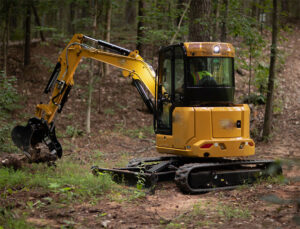In the context of the rapid development of global logistics and manufacturing, forklift trucks, as key material handling equipment, play an irreplaceable role in improving production efficiency and reducing operating costs. In recent years, with technological progress, changes in market demand and adjustments in the global supply chain, the price trend and competition pattern of global forklift truck products have shown a series of dynamic changes.
Analysis of Global Forklift Product Price Trend
Economic factors such as raw material price fluctuations, labour costs and tariff policy adjustments have a direct impact on forklift prices. For example, rising metal prices usually lead to an increase in forklift production costs, which in turn pushes up forklift selling prices. On the contrary, if the price of raw materials decreases or tariff policy favours imports, the price of forklift trucks may be adjusted downwards.
With the application of automation and intelligent technology in the field of forklift trucks, high-end forklift truck products are more feature-rich and more convenient to operate, which improves production efficiency. Although such technological advancement may make the price of high-end forklift trucks relatively high in the short term, in the long run, it helps to reduce the overall operating costs by improving production efficiency and reducing labour costs, which in turn affects the price positioning in the market.
The demand for forklift trucks varies across industries and regions. For example, the rapid development of the e-commerce industry has increased the demand for high-efficiency and high-capacity forklifts, which not only promotes the research and development of related technologies, but also facilitates the adjustment of forklift prices to adapt to changes in market demand.
Competitive landscape analysis
The global forklift truck market is dominated by some large players such as Toyota Industries, Doosan, and Linde, which enjoy a high market share globally due to their technological and brand advantages. At the same time, there are more and more SMEs that have successfully gained a foothold in niche markets by focusing on specific markets or providing customised solutions.
In order to stand out in the highly competitive market, forklift manufacturers are continuously investing in research and development and launching products with innovative technologies, such as electric forklifts and driverless forklifts, to meet higher requirements in terms of environmental protection, safety and efficiency. The differentiated product strategy helps companies to develop a unique advantage in the competition.
Facing the globalised market environment, forklift enterprises have adopted a global layout to expand market coverage and enhance international competitiveness by establishing production bases, setting up sales networks and participating in the formulation of international standards.
In short, the dynamic changes of global forklift product price trend and competition pattern reflect the complex interaction of global economy, technology, market demand and other aspects. In this process, technological innovation, market positioning and globalisation strategy have become important factors affecting the development of the forklift industry. In the future, with the deepening of sustainable development and intelligent trend, the forklift industry is expected to usher in more innovative opportunities and market growth points.






